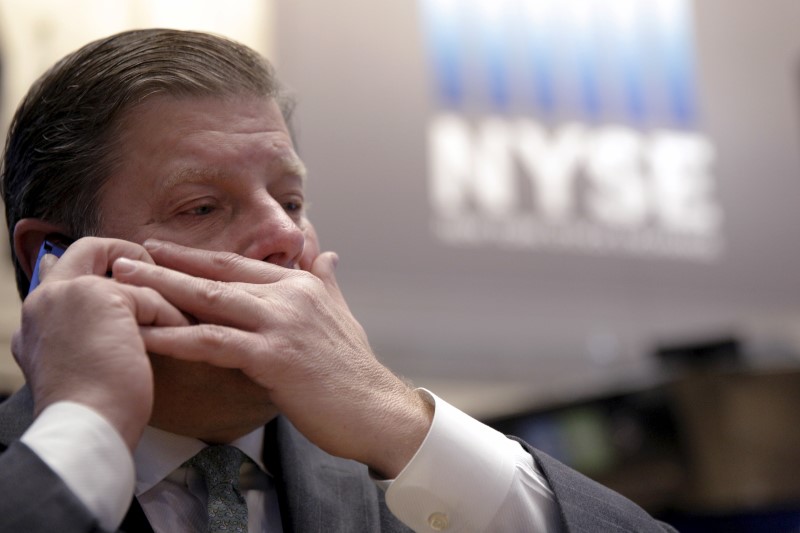This post was originally published on this site

Investing.com – The S&P 500 retreated Monday, led by a selloff in cyclical stocks including energy amid fresh worries about the economic impact of the Omicron Covid-19 variant ahead of the Federal Reserve’s monetary policy update later this week.
The S&P 500 fell 0.91% to 4,668.97 after closing at a record closing high of 4,712.02 on Friday. The Dow Jones Industrial Average slumped 0.89% , or 320 points, the Nasdaq slipped 1.39%.
Energy fell more than 2% weighed down by falling oil prices amid fresh worries about the threat to energy demand from the growing emergence of the omicron variant. The U.K. recorded its first death from the Omicron variant at a time when the country has moved to tougher restriction to spread the curb of the new variant.
Chevron (NYSE:CVX), Kinder Morgan (NYSE:KMI) and Exxon Mobil (NYSE:XOM) were the biggest decliners in the energy sector.
The jitters over the energy demand outlook come even as the OPEC raised its world oil demand forecast for the first quarter of 2022, forecasting a mild and temporary impact from Omicron.
Consumer discretionary stocks were also hit by Omicron-fueled fears with cruise line companies including Carnival (NYSE:CCL) and Norwegian Cruise Line (NYSE:NCLH) leading to the downside.
In tech, Apple (NASDAQ:AAPL) gave up gains after failing just shy of recording a $3 trillion valuation.
Semiconductor stocks exacerbated the decline in tech, paced by a decline in Amkor Technology (NASDAQ:AMKR), NVIDIA (NASDAQ:NVDA) and Applied Materials (NASDAQ:AMAT).
The risk-off sentiment triggered a flight to safety, supported a move higher in U.S. government bond prices, which trade inversely to yields. The 10-year yield fell below 1.4%.
Against the backdrop of falling yields, banking stocks including Regions Financial (NYSE:RF) , Wells Fargo (NYSE:WFC) and People’s United Financial (NASDAQ:PBCT) fell sharply.
Lower interest rates dent the return on interest that banks earn from their loan products, or net interest margin – the difference between the interest income generated by banks and the amount of interest paid out to depositors.
Utilities and consumer staples – defensive corners of the market – bucked the trend lower, while health care was also supported by a rise in the shares of vaccine makers.
Pfizer (NYSE:PFE), Moderna (NASDAQ:MRNA), and Novavax (NASDAQ:NVAX) were sharply higher following further reports confirming that additional booster Covid shots were effective against the Omicron variant.
The sell off on Wall Street comes just a day ahead of the Federal Reserve’s two-day meeting, which is expected to culminate on Wednesday in an announcement of a faster pace of bond tapering.
“We think the key policy decision at this meeting will be to accelerate the taper to a pace of $30bn/month, beginning in January, and setting the taper on course to conclude in mid-March,” Morgan Stanley said in a note.
The widely expected move to a faster pace of bond tapering has many betting that the Fed will move earlier than planned to increase rate hikes. Any indication of an earlier than expected liftoff in rates is unlikely to lead to selloff in equities as markets have been pricing in a move up in rates after Fed chairman Powell flagged the risk of elevated inflation persisting for longer than expected.
“If we see that [rate hike expectations] change by a month or two, I don’t think that the markets are going to sell off dramatically,” Phillip Toews, CEO & Portfolio Manager of Toews Asset Management said in an interview with Investing.com on Monday. “We’re coming from such a low level of interest rates, there’s an expectation already that rates are moving up.”

